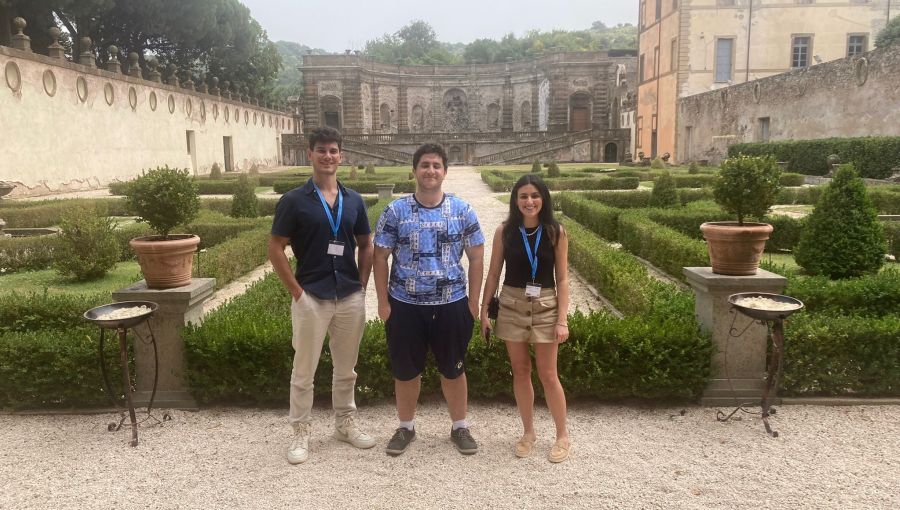Meet Art History M.A. Alumna Odette Lopez
Born and raised in Miami, Florida, Odette Lopez graduated from JCU with an M.A. in Art History in 2021. After graduation, Odette became Director of the Museum of Contemporary Art of the Americas in Miami, a position she held until January 2023. She is currently planning to pursue her Ph.D. in Classical Art and Archaeology.

Odette Lopez
Tell us about your background.
I studied art history at Barry University, where I concentrated on the art of medieval Japan. After completing my bachelor’s degree, I found that I didn’t know how I wanted to apply it (in a museum, gallery, or research), so I realized that I had a lot more that I needed to learn, and JCU presented the perfect opportunity.
What made you decide to earn your M.A. in Art History from JCU? How did you find out about the program?
After graduation, I realized I wanted to continue studying art history and began looking into graduate programs. My mom had the idea of looking into universities abroad for me, and JCU was the first to come up in her web search. I applied with a lot of skepticism; going to school in Rome seemed an insurmountable challenge. But the program had everything I wanted: small class sizes, on-site lessons, and opportunities to figure out what I wanted to concentrate on in my studies. When I got the acceptance letter, the decision was a no-brainer.
In my opinion, the best aspects of the M.A. are the on-site classes and the travel components that many of the courses offer. It’s very different to talk about ancient Greek wall painting in a classroom with a slideshow, and actually travel to Greece, and go to the museum with your professor, seeing it in real life. The emphasis the program puts on taking advantage of the resources that the city of Rome has to offer (museums, archaeological sites, ease of travel, etc.) is its greatest strength.
How have your graduate studies at JCU impacted your career?
My graduate studies at JCU have given me the tools I need to navigate a career in the arts. I had excellent professors, with whom I remain in contact to this day, and who have never failed to encourage me or help me, whether with letters of recommendation or advice. Through JCU’s internship opportunities, I was able to work with ARCA (the Association for Research into Crimes against Art), and the Journal of Art Crime as a guest editor and author, which is something I am still doing. JCU gave me the opportunity to improve my writing and research skills and let me get out of my comfort zone.
What did your job at the Museum of Contemporary Art of the Americas entail?
In the almost two years I worked at the museum, I wore many hats in my role as Director. I definitely hit the ground running upon being hired. The museum does 8-10 shows a year, and it is still a small organization so I took care of everything from grant management and website maintenance to marketing, social media, collection management, and overseeing exhibition logistics. This also included translating articles and essays from Spanish to English for our exhibition catalogs and brochures. One of the biggest projects I had to oversee was the transition of the organization from an art center to a museum, and working with a consultant to get everything ready for the reopening. The experience and skills I gained while working there are truly priceless.
You’re about to present a paper based on your M.A. thesis at a conference at the American Institute of Archaeology. What’s your paper about?
My paper looks at the genre of still life in Roman wall painting. It aims to challenge the traditional opinion of the ancient still life—that these paintings were of lesser importance than mythological ones—and redefine still lifes as significant groupings of carefully chosen objects that reflect and symbolize important cultural aspects and Roman ideals. The objects that are seen in these paintings (glass bowls, fruits and vegetables, wax writing tablets, etc.) are so much more than the objects themselves, they tell us about what the Romans ate, their industries in glassblowing, agriculture, animal husbandry, trade within the Empire, even medicine and religion, depending on the specific painting. I even go on to expand the genre to include garden paintings and garlands.





